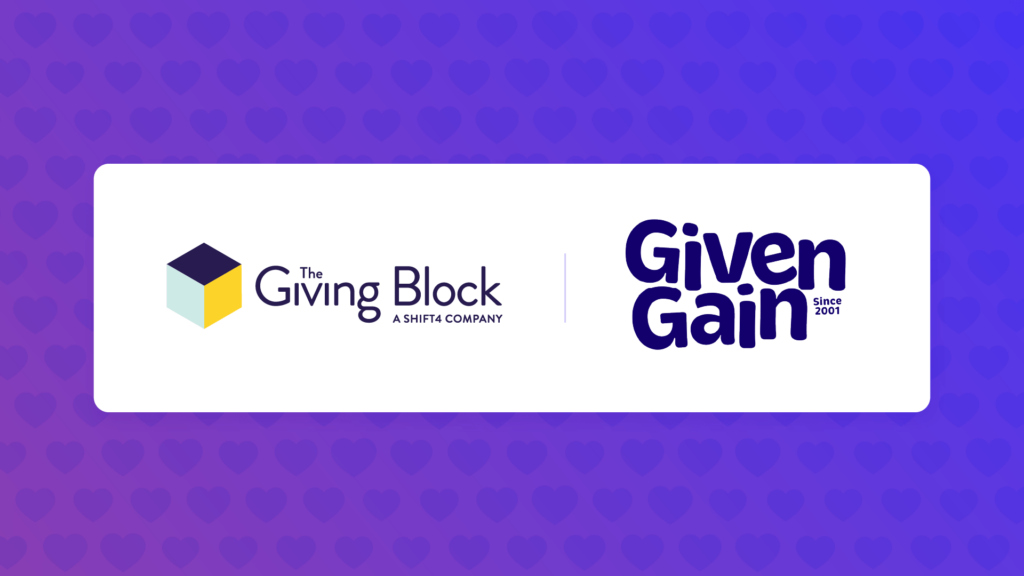Donor acquisition is one the biggest challenges facing nonprofits, and it’s not just you: statistically, today’s donors aren’t quite as loyal as they used to be. In fact, roughly 70% of donors only give once.
To counter this trend, you’ll need to create a steady flow of new contacts and first-time donors. Fortunately, there are plenty of actionable, affordable ways to gain new donors that you might not have considered yet.
Grow Your Supporter Base With These 20 Ways to Find Donors
Your organization’s new donor acquisition rate is one of the fundraising metrics that can measure the health of your donor cultivation strategy. Increase your donor acquisition rate by trying out these tactics:
- Make Your Website User-Friendly
- Turn Website Visitors into Email Contacts
- Make Your Case for Support to Volunteers
- Ask Your Board to Help
- Turn Supporters into Ambassadors
- Send Email Newsletters
- Promote All Types of Donations You Accept
- Attract New Followers on Social Media
- Build Strategic Partnerships
- Attend Public Events
- Book Speaking Engagements
- Host In-Person Events
- Look Up Donors from Similar Organizations
- Conduct Prospect Research
- Run Paid Ads
- Launch a Blog
- Pitch Stories to Local Media
- Create an Ideal Donor Profile
- Secure a Donor Gift Match
- Strengthen Your Ask with Core Impact Numbers
1. Make Your Website User-Friendly
Your website isn’t just important for increasing gifts from online donors; it’s the main gateway to find information about who you are, what you do, and how to support your cause. Your website should employ simple language to explain your mission, programs, and impact. It should also be mobile-friendly and supplement the text with visuals. Of course, you should prominently display a button or link to a page that details ways to get involved or donate.
2. Turn Website Visitors into Email Contacts
Every nonprofit website should have a way to collect basic information from visitors, such as their name and email address. Capturing these details enables your organization to re-engage them through email communications. Set up a form on a pop-up, sidebar or footer that provides a frictionless way for these visitors to stay in touch. When it comes time to fundraise, you’ll have a chance to ask for donations or help spreading the word.
3. Make Your Case for Support to Volunteers
Volunteers are already huge champions of your cause. By devoting lots of time and hard work, they are advocating for the change your organization wishes to create in the world. Some also may be willing to offer financial support on a regular or occasional basis. Even if they can’t or won’t give, they may have peers who are inspired by your mission. Bottom line: make sure you share your fundraising appeal with volunteers, regardless of whether they can give this time around.
4. Ask Your Board to Help
Your board of directors can steer your organization’s key decision points. Board members can also provide financial support in the form of donations and pledges. Beyond that, you can ask your board for referrals and introductions to potential donors in their networks, ask them to send fundraising appeals, or cultivate giving circles. When cultivating major donor prospects, use your board as validators of your brand’s trustworthiness.
5. Turn Supporters into Ambassadors
If your donor acquisition messaging isn’t connecting on social media or email, it might be time to try something different. Empower your biggest champions—such as board members, donors, volunteers, or program alumni—to become your brand ambassadors. These ambassadors can be the voice of your fundraising emails, narrators of video content, spokespeople that take over your social media account(s) for a day, or even peer-to-peer fundraisers. By tapping into their networks, you can amass new followers or gain support from unlikely donors.
6. Send Email Newsletters
Newsletters enable your contacts to keep up to date with your organization’s latest developments. Weekly, monthly or quarterly touchpoints are the perfect way to convey your nonprofit’s successes and needs. When contacts subscribe, they are signaling an interest in your cause. It’s a low-commitment way to stay in touch, but can open the door for future financial support.
7. Promote All Types of Donations You Accept
Modern nonprofit donation pages have a form where donors can input their credit card information and give directly. Does your donation page list all of the other ways your donors can give? If not, you may be missing out on support from highly generous donor demographics. If you accept stocks, crypto, DAF grants, planned gifts, recurring gifts (and so on), make sure your potential donors know about it.
8. Attract New Followers on Social Media
Having an authentic brand voice and an active presence on social media is key to gaining new followers, which can greatly increase your chances of acquiring new donors during your big fundraising season. Posting regularly is the first step. Next, you’ll want to share impact stories, highlight ways to give, use relevant hashtags to expand your posts’ reach, and comment on relevant news stories. Acknowledging the contributions of supporters is also a smart way to publicly signal that you value your donors.
9. Build Strategic Partnerships
Developing connections into strategic partnerships can help nonprofits grow their audience and steward new donors. Partnering with local businesses or community organizations can unlock opportunities for special events, fundraisers, donor matches and more. These partnerships can also make for newsworthy pitches to local media, which can enhance the value of this strategic relationship.
10. Attend Public Events
There’s an old fundraising adage that says to “be where your donors are.” While that may sound overly optimistic—as if there is a single place where your would-be donors all congregate—there’s plenty of truth to the concept. For example, if your organization is devoted to environmental conservation, attend a nearby park or beach cleanup. Use volunteer events, rallies, or even book signings as opportunities to network and engage with like-minded people.
11. Book Speaking Engagements
Your leadership can be your best ambassadors in personal meetings as well as in the public forum. By booking speaking events and participating in panels, you can add a layer of credibility to your organization and articulate what makes your organization stand out from the pack. Plus, if the event is recorded, you’ll have an evergreen piece of content to share in future communications.
12. Host In-Person Events
While fundraising galas are geared toward your current supporters, you can invite prospective donors to open houses, raffles, or get-to-know-you events. Use these more casual affairs to introduce your nonprofit’s impact and give your leadership face-to-face time with friendly faces that may be willing to support you in the future.
13. Look Up Donors from Similar Organizations
Studying the donors of nonprofits with a similar mission (or located in your area) is one way to approach your new donor outreach. Most nonprofit organizations produce an annual report; these reports often list major donors by giving tiers (e.g. $1000 or more, $5000 or more, $10000 or more, etc.). From these reports you can develop a list of donor prospects to contact in the future.
14. Conduct Prospect Research
Prospect research is a game-changer for launching or re-energizing a major gifts program. Research tools provide insights into personal wealth, giving histories, biographical information and involvement in other nonprofits (such as board affiliations). Devoting time each year to prospect research is key to securing gifts from new donors, especially those who have a high giving potential.
15. Run Paid Ads
Social media and search engines offer paid advertising for nonprofits. These ad placements are not only high-traffic, they can also be highly cost-effective. Plus, you can limit your spending to a certain amount each day and narrow your reach by targeting specific audiences based on email lists, interests or demographics.
16. Launch a Blog
Generate organic traffic to your website with an inspiring nonprofit blog. Publish regular articles about current news and trends related to your mission, fundraising results, updates from your leadership and more. Each blog post can have a “ways to give” call-to-action at the end, to encourage your readers to become donors.
17. Pitch Stories to Local Media
Local community new outlets are perfect places to pitch a story about your nonprofit’s mission, recent highlight, or upcoming event. Earned news stories featured on TV or radio stations, social media, and or print can help you find new supporters that are sympathetic to your cause.
18. Create an Ideal Donor Profile
Donor profiles empower your fundraising team to narrow their prospect list, develop targeted social media ad campaigns, and craft tailored communications. In order to create a donor profile, first segment your donors into separate giving tiers. Then, for each segment, you can look at your donor database or CRM to identify recurring demographic information such as age, geographic location, and giving history.
19. Secure a Donor Gift Match
Amplify your donation appeal with a limited-time donor match opportunity. Partnering with a corporate sponsor or one of your major donors can allow you to offer to match donations up to a certain dollar amount. These matches can incentivize first-time donors to support your cause. After all, who doesn’t want to double their positive impact on the world?
20. Strengthen Your Ask with Core Impact Numbers
Donors like to know how their donations will be used by the organizations they support. Highlighting one or more core impact numbers not only creates transparency, it also helps donors understand the value of their gifts. A core number could be anything that exemplifies your nonprofit’s impact, such as the cost of providing a hot meal, building a home, or average value of an academic scholarship you provide.
Key Takeaways: Finding New Donors for Your Cause
Reaching new donors is essential for achieving long-term fundraising success. Try these approaches to open up avenues for more donors to support your organization:
- Develop a multi-channel communications plan to convert contacts into donors.
- Engage potential donors in the networks of existing supporters, volunteers, and board members.
- Target like-minded individuals through paid advertising on social media.
- Conduct prospect research to identify major gift donor prospects.
- Optimize your website to create a perpetual pipeline of new contacts.
- Promote the various types of donations that your nonprofit can accept from donors.
- Make a compelling ask by highlighting core impact numbers.
The more of these strategies you can incorporate, the more likely it is that you’ll generate an active pipeline of new contacts and donors. Then, the real benefit of new donor acquisition begins: the ability to steward them toward supporting your organization for years to come.




















